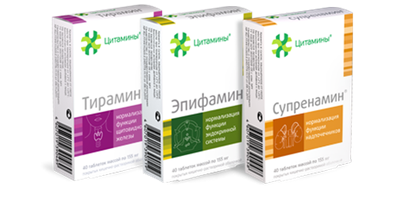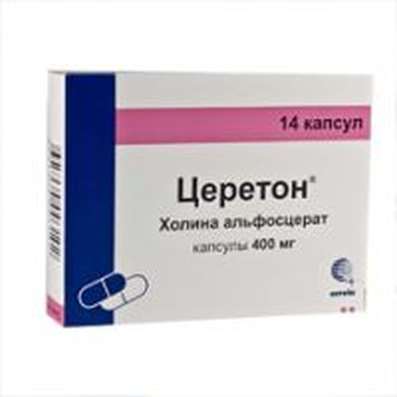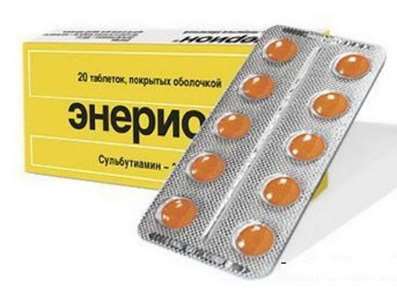Instruction for use: Everolimus
I want this, give me price
Trade name of the drug – Afinitor, Sertiñan, Everolimus 2%, Everolimus 9,09%
The Latin name of the substance Everolimus
Everolimusum (genus. Everolimusi)
Chemical name
Dihydroxy-12 - [(2R) -1 - [(1S, 3R, 4R) -4- (2-hydroxyethoxy) -3-methoxycyclohexyl] propan-2-yl] -19,30-dimethoxy-15,17,21 , 23.29.35-hexamethyl-11,36-dioxa-4-azatricyclo [30.3.1.0] hexatriaconta-16,24,26,28-tetraen-2,3,10,14,20-penton
Gross Formula
C53H83NO14
Pharmacological groups:
Antineoplastic agents - protein kinase inhibitors
Immunosuppressive drugs
CAS Code
159351-69-6
Application of pregnancy and breastfeeding
The action category for fetus by FDA is D.
Model clinical-pharmacological article 1
Pharmacotherapy. Immunosuppressive agent, inhibitor of the proliferative signal. It has an immunosuppressive effect by inhibiting antigen-activated T cell proliferation, clonal expansion caused by interleukin T cells (interleukin-2, interleukin-15). It inhibits the intracellular signaling pathway, which normally leads to cell proliferation triggered by the binding of T cell growth factors to the corresponding receptors. The blockade of the signal causes the cell division to stop at the G1 stage of the cell cycle. At the molecular level, it forms a complex with the cytoplasmic protein FKBP-12. There is an inhibition of the phosphorylation of p70 S6 kinase, stimulated by a growth factor. Phosphorylation of p70 S6 kinase is under the control of FRAP, i.e. The Everolimus-FKVR-12 complex binds to FRAP. FRAP is a key regulatory protein that controls cellular metabolism, growth and proliferation; The violation of its functions explains the cessation of the cell cycle caused by the everolimus. Everolimus has an action mechanism different from cyclosporine. The combination of everolimus with cyclosporine is more effective than in the isolated use of each of them. Everolimus inhibits the proliferation of hematopoietic and nonhematopoietic cells (smooth muscle cells). The proliferation of smooth muscle cells of vessels, triggered by damage to endothelial cells, leads to the formation of neointima, which plays a key role in the pathogenesis of chronic rejection.
Pharmacokinetics. Bioavailability of dispersible tablets (compared to a conventional tablet) is 0.9. TCmax - 1-2 hours TCss - on the 4th day. When used in doses of 0.75 mg and 1.5 mg twice a day Cmax - 6.5-15.7 and 12.3-28.3 ng / ml, respectively; AUC - 44-106 and 72-160 ng • h / ml, respectively. When used in doses of 0.5 mg and 1.5 mg twice a day, the basal concentration in the blood (determined in the morning before taking the next dose) is 2.0-6.2 and 2.5-11.7 ng / ml, respectively. The basal concentration is correlated with AUC (correlation coefficient 0.86-0.94). Concentration in the blood is proportional to the dose (in the dose range of 0.5 to 15 mg). The ratio of blood concentration and plasma concentration is 17-73% (depends on the concentration values in the range of 5-5000 ng / ml). When taking tablets with very fatty foods, Cmax and AUC decrease by 60% and 16%, respectively. The connection with proteins is 74%. The volume of distribution is 235-449 l; The volume of distribution (in the equilibrium state) is 110 liters (deviation of 36%). Everolimus is a substrate of CYP3A4 and P-glycoprotein. The main pathways of metabolism are monohydroxylation and O-dealkylation. The two main metabolites are formed by the hydrolysis of cyclic lactone and do not have significant immunosuppressive activity. The total ground clearance is 8, l / h (deviation is 27%). T1 / 2 - 21-35 h. It is excreted by the intestine (80%) and by the kidneys (5%). In patients with hepatic insufficiency (class B on the Child-Pug scale), the AUC increases 2-fold. The AUC index positively correlates with the bilirubin concentration and the prothrombin time increase and negatively with the serum albumin concentration. In children from 1 year to 16 years, the clearance is linearly increased depending on the age, body surface area (0.49-1.92 square meters), body weight (11-77 kg); In the equilibrium state the clearance is 7.2-12.2 l / h / m 2; T1 / 2 - 19-41 hours. In children 1-16 years of age, receiving everolimus in the form of dispersible tablets at a dose of 0.8 mg / m (maximum 1.5 mg) twice a day with cyclosporine (microemulsion), AUC - 60 -114 ng • h / ml, which corresponds to that in adults receiving the drug at a dose of 0.75 mg twice a day. Basal concentration in the equilibrium state is 2.7-6.1 ng / ml. Patients aged 16-70 years experienced a decrease in clearance by 0.3% per year. The overall clearance in patients of the Negroid race is higher by 20%. Basal concentration of everolimus, frequency of acute rejection and thrombocytopenia are related to each other (in kidney and heart transplant recipients for 6 months after transplantation). The everolimus exposure remains stable all the time during the first year after transplantation. Pharmacokinetics in patients with renal and cardiac grafts receiving everolimus 2 times a day simultaneously with cyclosporine (in the form of a microemulsion) is comparable.
Indication. Prevention of graft rejection in adult kidney and heart transplant recipients with low and medium immunological risk receiving basic immunosuppressive therapy with cyclosporine (as a microemulsion) and GCS.
Contraindications. Hypersensitivity, children's age.
Carefully. Hepatic failure, chronic renal failure, pregnancy. For LF containing lactose (in addition): hereditary intolerance of galactose, lactase deficiency, glucose-galactose malabsorption.
Dosing. Inside, with or without food (for minimal variability), immediately after transplantation, simultaneously with cyclosporine (microemulsion); Tablets are swallowed whole, washed down with a glass of water (or in the form of dispersible tablets) to 0.5 mg twice a day. After 4-5 days, the dosing regimen is adjusted (based on the basal concentration of everolimus).
For liver failure (class A or B on the Child-Pug scale), the dose is reduced by a factor of 2 (compared to the average dose) in cases where there is a combination of two of the indicators: bilirubin> 34 μmol / l, albumin <35 g / l, Prothrombin time is more than 1.3 in INR (increase more than 4 s). The dose is titrated, based on therapeutic monitoring.
Representatives of the Negroid race (for limited information) may need a higher dose to achieve the same effect as other patients receiving the drug at recommended adult doses.
Side effect. Frequency: very often (more than 1/10), often (more than 1/100 and less than 1/10), infrequently (more than 1/1000 and less than 1/100), rarely (more than 1/10 000 and less than 1/1000) , Very rarely (less than 1/10000).
On the part of the organs of hematopoiesis: very often - leukopenia (dose-dependent, more often at a dose of 3 mg / day); Often - thrombocytopenia (dose-dependent, more often at a dose of 3 mg / day), anemia (dose-dependent, more often at a dose of 3 mg / day), coagulopathy, thrombotic thrombocytopenic purpura / hemolytic uraemic syndrome; Infrequently - hemolysis.
From the side of metabolism: very often - hypercholesterolemia, hyperlipidemia; Often hypertriglyceridemia.
From the CVS: often - increased blood pressure, lymphocele (with kidney transplantation), phlebothrombosis.
From the respiratory system: often - pneumonia; Infrequently - pneumonitis.
From the digestive system: often - abdominal pain, diarrhea, nausea, vomiting.
On the part of the skin: often - angioedema (with simultaneous administration of ACE inhibitors), acne, complications from the surgical wound; Infrequent - a rash.
From the musculoskeletal system: infrequently - myalgia.
From the genitourinary system: often - urinary tract infections; Infrequently - necrosis of renal tubules, pyelonephritis, hypogonadism in men (decreased testosterone concentration, increased concentration of LH).
Other: often - viral, bacterial, fungal infections, sepsis, swelling, pain; Infrequently - wound infection, hepatitis, violations of the liver, jaundice, increased ALT, ACT, GGT.
It is possible (in patients who have observed at least 1 year) the appearance of lymphomas or lymphoproliferative diseases (in 1.4% of patients who received everolimus 1.5 mg or 3 mg / day, in combination with other immunosuppressants); Malignant neoplasms of the skin (in 1.3% of patients), other types of malignancy (in 1.2% of patients).
Overdose. Treatment: symptomatic.
Interaction. Metabolized with the participation of the CYP3A4 isoenzyme, is a substrate for the P-glycoprotein carrier protein, therefore, use with potent inhibitors or inducers of CYP3A4 is not recommended.
P-glycoprotein inhibitors can reduce the release of everolimus from intestinal cells and increase its concentration in serum.
Everolimus was a competitive inhibitor of CYP3A4 and CYP2D6, potentially increasing the concentrations of drugs metabolized with the participation of these enzymes. Caution should be exercised with the simultaneous use of everolimus with substrates CYP3A4 and CYP2D6, which have a narrow therapeutic index.
Bioavailability of everolimus significantly increases with the simultaneous use of cyclosporine (inhibitor of CYP3A4 / P-glycoprotein).
Ciclosporin in the form of a microemulsion increases the Averolum AUC by 168% (46-365%) and Cmax by 82% (25-158%) compared with the use of only one everolimus. When the dose of cyclosporine varies, it may be necessary to adjust the dose of everolimus.
The clinical significance of the effect of everolimus on the pharmacokinetics of cyclosporine is minimal in patients with kidney and heart transplant who receive cyclosporin in the form of a microemulsion.
The use of everolimus after multiple doses of rifampicin (inducer CYP3A4), increases the clearance of everolimus by 3 times, reduces Cmax by 58% and AUC by 63%.
The combined use of everolimus with rifampicin is not recommended.
The administration of a single dose of everolimus with atorvastatin (substrate CYP3A4) or pravastatin (P-glycoprotein substrate) does not have a clinical effect on the pharmacokinetics of atorvastatin, pravastatin, everolimus, and the overall bioreactivity of HMG-CoA reductase in plasma. However, these results do not take into account the effect of other inhibitors of HMG-CoA reductase. Patients receiving inhibitors of HMG-CoA reductase should be monitored for rhabdomyolysis and other adverse events.
Moderate inhibitors of CYP3A4 and P-glycoprotein (fluconazole, erythromycin, verapamil, nicardipine, diltiazem, nelfinavir, indinavir, amprenavir) can increase the concentration of everolimus in the blood.
Inductors CYP3A4 (St. John's wort, carbamazepine, phenobarbital, phenytoin, efavirenz, nevirapine) can increase the metabolism of everolimus and reduce its concentration in the blood.
Grapefruit juice affects the activity of cytochrome P450 and P-glycoprotein, so its simultaneous use with everolimus should be avoided.
Against the background of treatment with everolimus, vaccination may be less effective. Use of live vaccines should be avoided.
Special instructions. Treatment should be conducted only by physicians with experience of immunosuppressive therapy after organ transplantation, and the ability to monitor the concentration of everolimus in whole blood.
Patients with baseline concentrations of 3 ng / ml or more have a lower incidence of acute rejection (kidney and heart) than patients with a basal concentration of less than 3 ng / ml.
The recommended upper limit of the therapeutic concentration of everolimus is 8 ng / ml.
In patients with hepatic insufficiency, while using powerful inducers and inhibitors of CYP3A4, when switching to other LF and / or if the dose of cyclosporine is significantly reduced, it is necessary to monitor the concentration of everolimus in the blood.
The concentrations of everolimus when using dispersible tablets are somewhat lower than when using conventional tablets.
Since cyclosporine interacts with everolimus, a decrease in the concentration of the latter is possible if the concentration of cyclosporine is significantly reduced (basal concentration less than 50 ng / ml).
Everolimus should not be used for a long time with cyclosporine in a full dose. A decrease in the dose of cyclosporine begins 1 month after renal transplantation, which leads to an improvement in renal function.
Recommended concentration of cyclosporine (2 hours after administration): 0-4 weeks - 1000-1400 ng / ml; 5-8 weeks - 700-900 ng / ml; 9-12 weeks - 550-650 ng / ml; 13-52 weeks - 350-450 ng / ml. In this case, the basal concentration of cyclosporin should be (ng / ml): 1st month - 125-353; 3rd month - 46-216; 6th month - 22-142; 12th month - 33-89.
It is very important (in the early period after transplantation) that the concentrations of everolimus and cyclosporine do not decrease below the therapeutic range, in order to minimize the risk of lack of effect. Before decreasing the dose of cyclosporine, it should be clarified that the equilibrium concentration of everolimus is 3 ng / ml and more.
There are limited data on the use of everolimus with a basal cyclosporin concentration of less than 50 ng / ml or a cyclosporin concentration in the maintenance phase of less than 350 ng / ml.
If the patient does not tolerate a reduction in the dose of cyclosporine, the subsequent use of everolimus should be reviewed.
In patients after heart transplantation in the supporting phase, a dose of cyclosporine should be reduced to improve kidney function.
If the kidney function worsens or if the SC is less than 60 ml / min, correction of the therapy regimen is necessary. The dose of cyclosporine is established based on its basal concentration.
In heart transplantation, there are limited data on the use of everolimus at basal concentrations of cyclosporine less than 175 ng / ml in the first 3 months; Less than 135 ng / ml for the 6th month; Less than 100 ng / ml - after 6 months.
Everolimus is used concurrently with cyclosporine in the form of a microemulsion, basiliximab and GCS.
It is not recommended to use together with powerful inhibitors of CYP3A4 (ketoconazole, itraconazole, voriconazole, clarithromycin, telithromycin, ritonavir) and inducers (rifampicin, rifabutin), unless the expected benefit of therapy exceeds the potential risk.
It is necessary to monitor the concentrations of everolimus in the blood with simultaneous use with inducers or inhibitors of CYP3A4 and after their cancellation.
During the treatment period, patients should be monitored to detect skin lesions; It is necessary to minimize the impact of UV radiation, sunlight, use appropriate sunscreen. The risk of skin lesions is associated with the duration and intensity of immunosuppression, than with the use of a particular drug. Excessive immunosuppression predisposes to the development of infections, especially opportunistic infections. There are reports of the development of fatal infections and sepsis.
Within 3 months after transplantation, it is recommended to carry out the prevention of CMV infection (in patients with an increased risk of infection).
The combined use of everolimus with cyclosporine (microemulsion) increases serum cholesterol and TG, which may require appropriate treatment. Patients should be observed to identify hyperlipidemia, if necessary, to treat lipid-lowering drugs and prescribe the appropriate diet.
In case of detection of hyperlipidemia in the appointment of immunosuppressive drugs, it is necessary to assess the risk / benefit ratio.
The risk / benefit ratio of everolimus therapy should be evaluated in patients with severe refractory hyperlipidemia. Patients receiving HMG-CoA reductase inhibitors and / or fibrates should be monitored for adverse events caused by the above drugs.
During the treatment, all patients are recommended control of kidney function. When the QC is increased, the question of correction of immunosuppressive therapy (reduction of the dose of cyclosporine) should be solved.
Care should be taken when using other drugs that have a negative effect on kidney function. There are limited data on the use of everolimus in children with kidney transplantation.
Patients with hepatic insufficiency should carefully monitor the basal concentration of everolimus in whole blood.
Women of childbearing age should be recommended to use effective methods of contraception during treatment and for 8 weeks after the end of therapy.

 Cart
Cart





